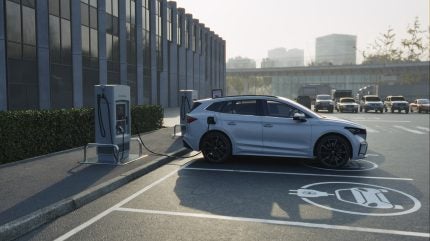
Drivers are increasingly hesitant to transition from internal combustion engine (ICE) vehicles to electric vehicles (EVs), with this trend being more noticeable in Europe compared to the US, according to a survey released by Shell.
According to a survey of 15,000 drivers from around the world, including those from UK, China, Germany, and the US, cost continues to be the primary obstacle to electric vehicle adoption, especially in Europe, where 43% of non-EV drivers point to affordability as a major concern.

Discover B2B Marketing That Performs
Combine business intelligence and editorial excellence to reach engaged professionals across 36 leading media platforms.
In the US, the interest in EVs is slightly lower, with 31% in 2025 compared to 34% in 2024. Meanwhile, in Europe, the drop is more pronounced, with interest decreasing from 48% in 2024 to 41% in 2025.
The survey reveals a notable rise in confidence among current EV drivers. Globally, 61% of EV drivers now express less concern about running out of charge compared to a year ago. Additionally, almost 72% of them report that the options and availability of public charging stations have improved.
Demonstrating a commitment to the shift towards electric mobility, 91% of current EV drivers, including those with battery EVs and Plug-in Hybrid EVs, express their willingness to consider another EV for their next vehicle purchase.
In the US, 46% of petrol and diesel car drivers support policies aimed at phasing out ICE vehicles, while in Europe, the figure is 44%.
However, this support is often contingent upon certain conditions. For instance, only 56% of those who favour phasing out ICE vehicles would maintain their support if electric vehicles (EVs) remain more expensive than their petrol and diesel counterparts.
Additionally, only half of the supporters would continue to back the phase-out if there is no significant improvement in the charging infrastructure for EVs.
The proportion of EV drivers who own only one vehicle has significantly increased compared to 2024, highlighting a decreased reliance on ICE vehicles as backups.
This trend reflects the growing acceptance and satisfaction with EVs among current users.
In the US, the percentage of single-vehicle EV owners increased from 34% to 41%. In Europe, this figure went up from 49% to 54%, and in China, it surged from 72% to 89%.
About 78% of EVs driven by European participants were purchased new, a decrease from 82% last year. This indicates that the second-hand market is expanding, potentially attracting more consumers to the EV sector by offering more affordable options, stated Shell.
Shell’s EV charging network encompasses over 75,000 charging stations worldwide, with a primary focus on key markets such as Europe, the US, and China.
Shell Mobility & Convenience group executive vice president David Bunch said: “Shell has established strong public charging networks in key markets worldwide, and this research reinforces what we hear from our customers: there’s a growing disparity in the transition to electric vehicles.
“While current EV drivers are feeling more confident, the relatively high cost of owning an electric vehicle, combined with broader economic pressures, are making it a difficult decision for new consumers.”






